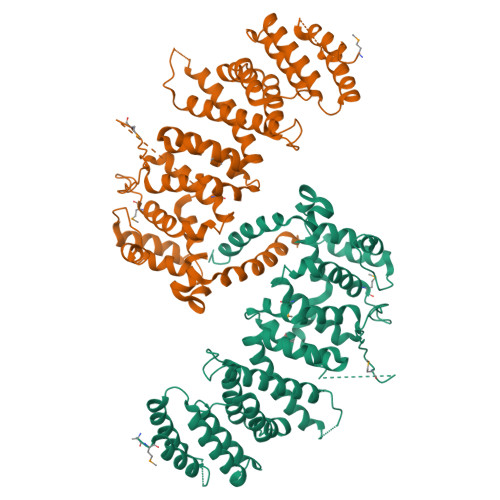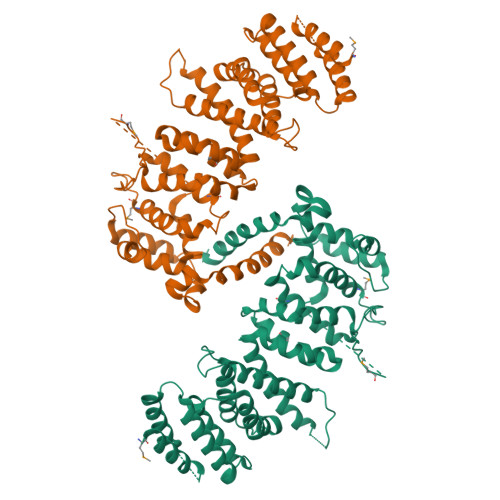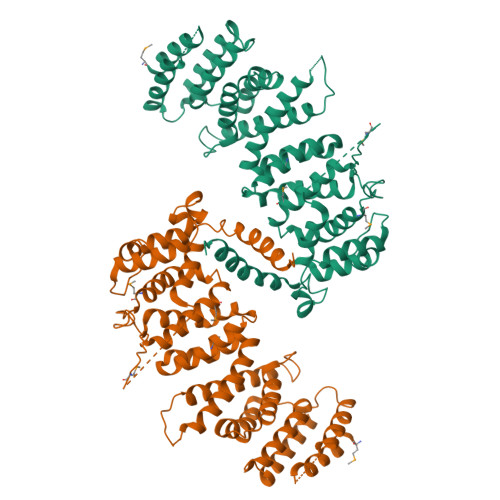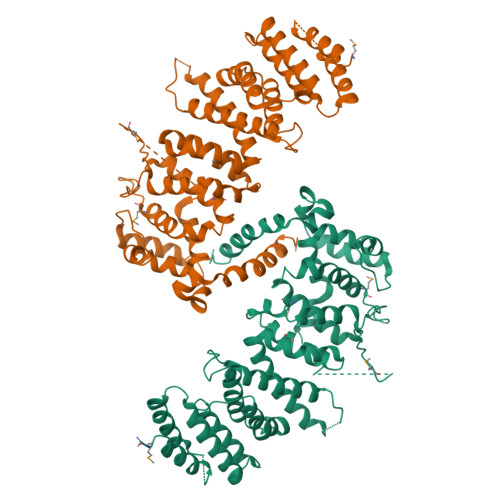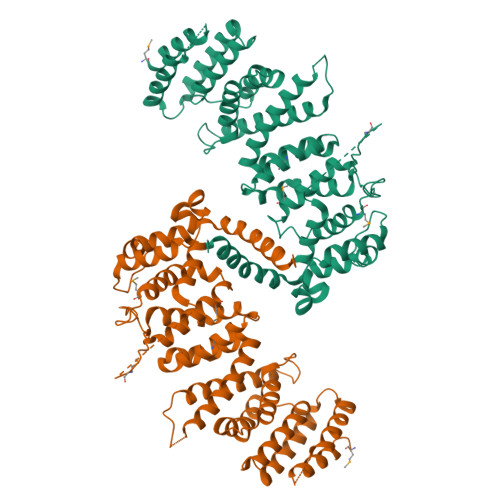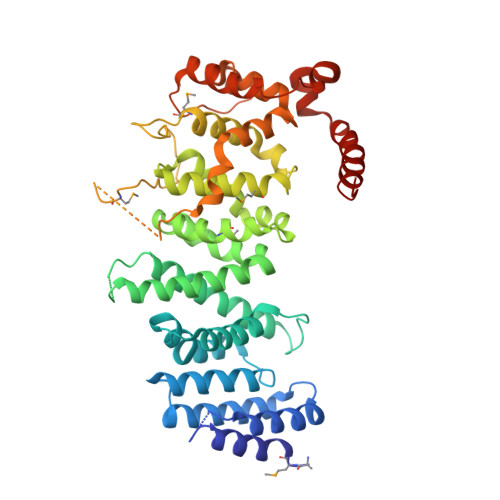Crystal structure of the yeast TSC1 core domain and implications for tuberous sclerosis pathological mutations.
Sun, W., Zhu, Y.J., Wang, Z., Zhong, Q., Gao, F., Lou, J., Gong, W., Xu, W.(2013) Nat Commun 4: 2135-2135
- PubMed: 23857276
- DOI: https://doi.org/10.1038/ncomms3135
- Primary Citation of Related Structures:
4KK0, 4KK1 - PubMed Abstract:
Tuberous sclerosis complex is a disease caused by mutations in two tumor-suppressor genes, TSC1 and TSC2. The TSC1 protein, also known as hamartin, has a critical role in controlling mTOR signalling. TSC1 does not bear apparent sequence homology with other proteins. Here we show that the N-terminal half of yeast TSC1 forms a protease-resistant domain, which is evolutionarily conserved. The crystal structure of this yeast TSC1 core domain shows that it contains a pseudo-HEAT repeat fold with its C-terminal end capped by a helical subdomain. This allows us to model the three-dimensional structure of the human TSC1 N-terminal domain (TSC1-NTD), which anchors essentially all pathogenic TSC1 missense mutations found in tuberous sclerosis patients. Interestingly, most pathogenic mutations map inside of the folded TSC1-NTD structure, whereas most non-pathogenic variants are on the structural surface. This indicates that the disruption of the TSC1-NTD globular structure is a major cause of tuberous sclerosis.
Organizational Affiliation:
Beijing Key Laboratory of Non-coding RNA, Institute of Biophysics, Chinese Academy of Sciences, Beijing, China.









